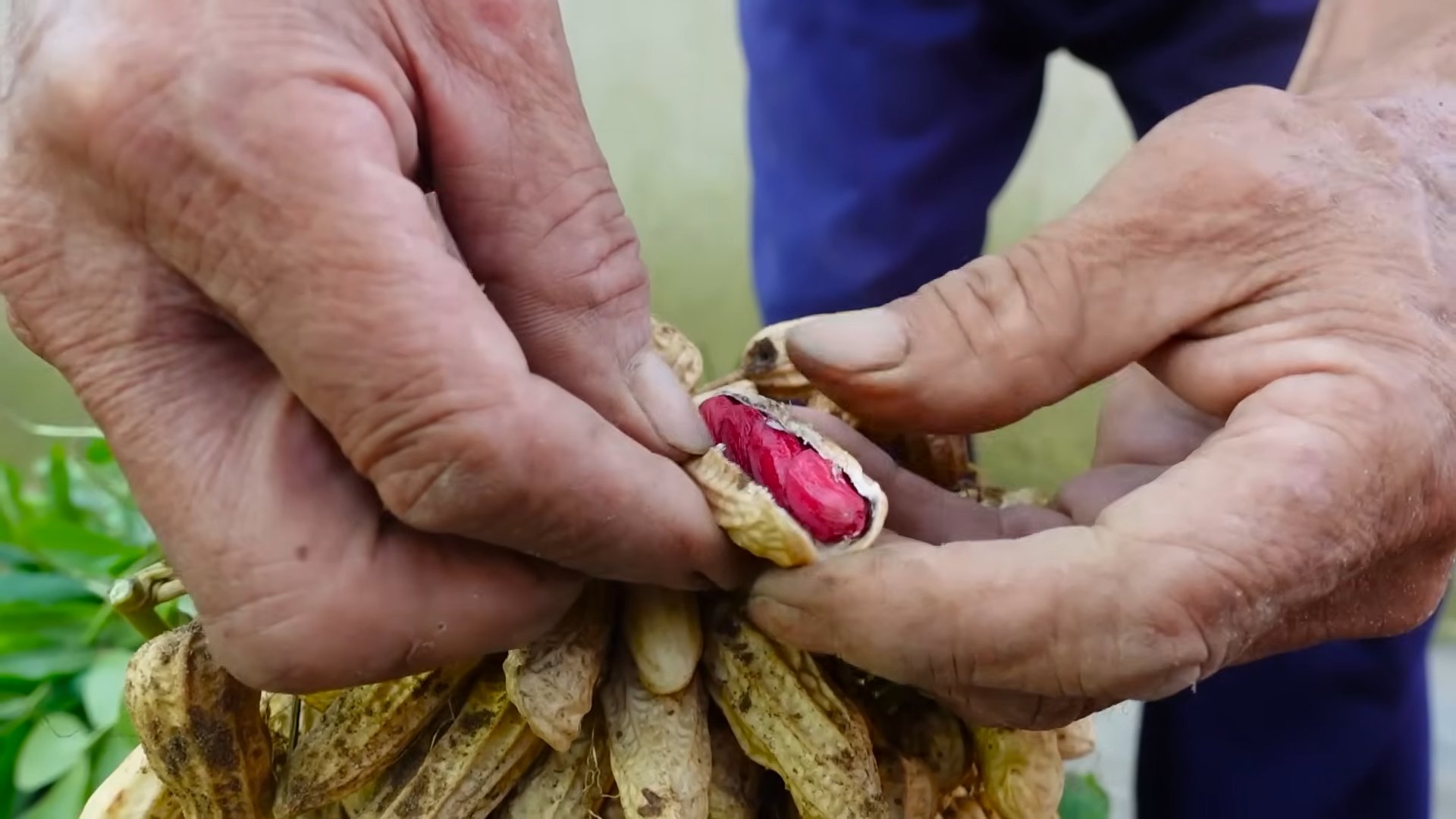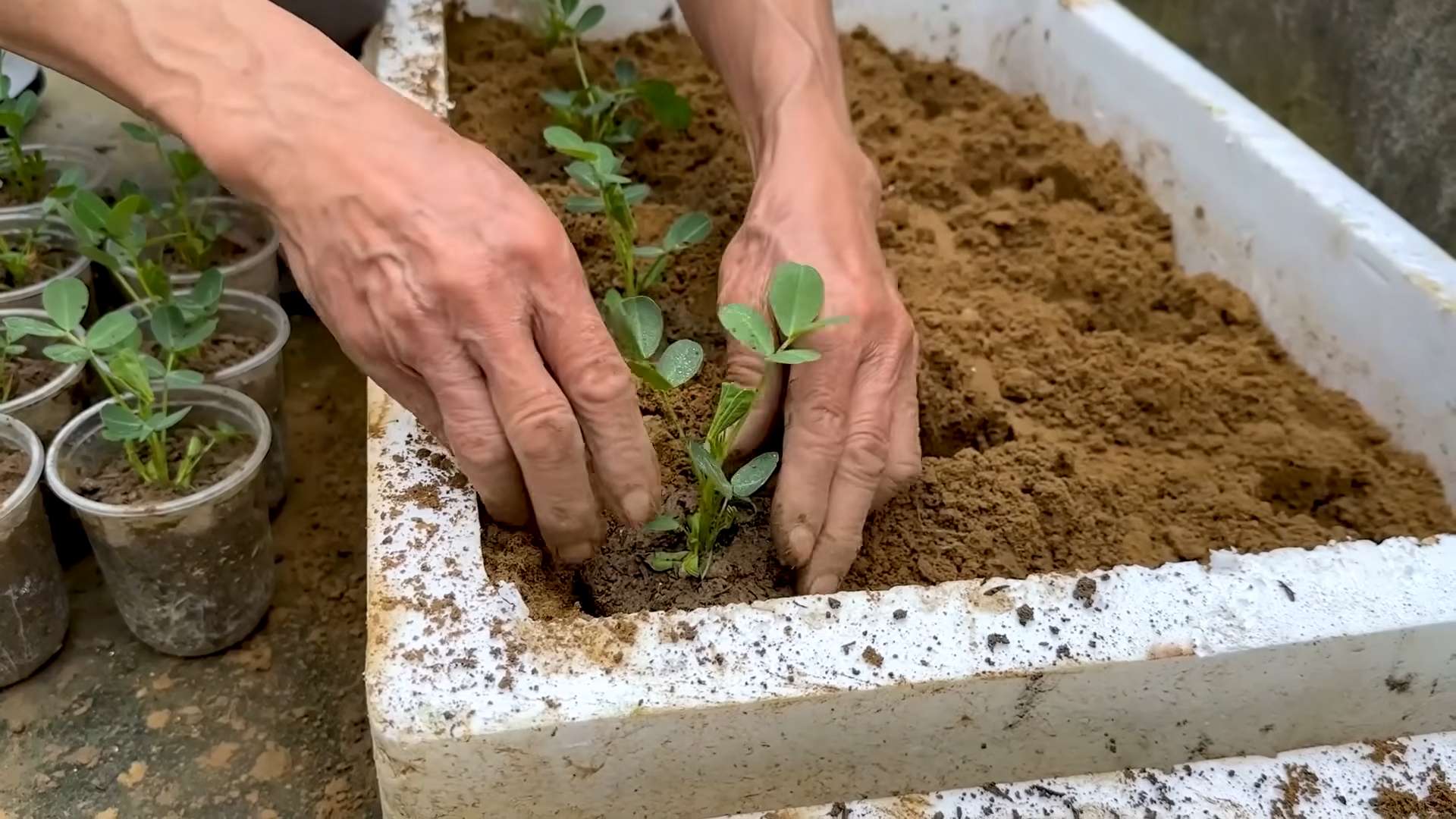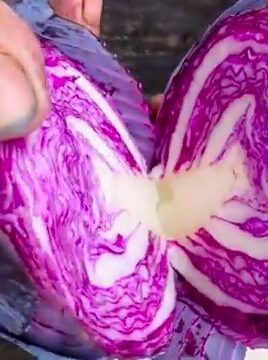Zucchini Harvest Tips: Are you drowning in zucchini? I know the feeling! One minute you’re admiring a few tiny blossoms, and the next, you’re facing a mountain of green squash. It’s a common tale for home gardeners, and while zucchini bread is delicious, there’s only so much one can eat! But don’t despair; this isn’t just about surviving the zucchini onslaught; it’s about mastering it!
For centuries, zucchini, a New World native, has been a symbol of abundance and summer’s bounty. From its humble beginnings in Central America, it has spread across the globe, becoming a staple in countless cuisines. But with great abundance comes great responsibility – the responsibility to harvest it correctly and make the most of your garden’s generous gift.
That’s where these Zucchini Harvest Tips come in. I’m going to share my favorite DIY tricks and hacks to ensure you’re picking your zucchini at the peak of perfection, maximizing its flavor and texture. Plus, I’ll show you how to store it properly to extend its shelf life, and even some creative ways to use up that surplus. Because let’s face it, nobody wants to see all that hard work go to waste. So, grab your gardening gloves, and let’s dive in!

Zucchini Harvest Tips: From Garden to Table Like a Pro!
Okay, zucchini lovers, let’s talk about harvesting! I know, I know, sometimes it feels like you blink and suddenly you have a zucchini the size of a small child lurking in your garden. But fear not! Harvesting zucchini at the right time and in the right way is key to enjoying their delicious flavor and keeping your plants producing all season long. I’m going to walk you through everything you need to know, from identifying the perfect zucchini to storing your bounty.
When to Harvest: The Goldilocks Zone
The biggest mistake I see people make is letting their zucchini get too big. Trust me, bigger isn’t always better! Overgrown zucchini tend to be seedy, watery, and frankly, not that tasty. We’re aiming for the “just right” zone.
* **Ideal Size:** Generally, you want to harvest zucchini when they are between 6-8 inches long. Some varieties might be slightly different, so check your seed packet for specific recommendations.
* **Skin Texture:** The skin should be smooth and tender. If it’s starting to get tough or dull, it’s probably past its prime.
* **Harvest Frequency:** Check your plants every day or two, especially during peak season. Zucchini grow incredibly fast!
* **The Nail Test:** If you’re unsure, try gently pressing your fingernail into the skin. If it easily punctures, it’s ready to harvest. If it’s hard to pierce, give it another day or two.
Tools of the Trade: What You’ll Need
You don’t need a ton of fancy equipment to harvest zucchini, but having the right tools will make the job much easier and prevent damage to your plants.
* **Sharp Knife or Pruning Shears:** This is essential! You want a clean cut to avoid tearing the plant. I prefer pruning shears because they’re easier to maneuver in the dense foliage.
* **Gloves (Optional):** Zucchini plants can be a little prickly, so gloves can protect your hands.
* **Basket or Bag:** To carry your harvest back to the kitchen.
* **Water (Optional):** I like to have a hose or watering can nearby to give the plant a little drink after harvesting.
Harvesting Like a Pro: Step-by-Step Instructions
Alright, let’s get down to business! Here’s how I harvest my zucchini:
1. **Identify Your Target:** Carefully inspect your plants and locate the zucchini that are ready for harvest. Remember to look under the leaves – they can be sneaky!
2. **Position Yourself:** Get into a comfortable position where you can easily reach the zucchini without straining or damaging the plant.
3. **Make the Cut:** Using your sharp knife or pruning shears, cut the zucchini stem about 2 inches from the fruit. Make a clean, angled cut. This helps prevent water from pooling on the cut stem and potentially causing rot.
4. **Handle with Care:** Gently remove the zucchini from the plant and place it in your basket or bag. Avoid dropping or bruising the fruit.
5. **Inspect the Plant:** Take a moment to inspect the rest of the plant for any other ready-to-harvest zucchini, pests, or diseases.
6. **Water (Optional):** Give the plant a little water to help it recover from the harvest. This is especially important during hot weather.
7. **Repeat:** Continue harvesting any other ripe zucchini on your plants.
8. **Admire Your Bounty:** Take a moment to appreciate your hard work and the delicious zucchini you’ve grown!
Dealing with Monster Zucchinis (It Happens!)
Okay, let’s be honest, sometimes you miss one. You go on vacation, you get busy, and suddenly you have a zucchini the size of a football. Don’t despair! While it might not be the most flavorful, you can still use it.
* **Seeds:** Scoop out the seeds and discard them. They’ll be too tough to eat.
* **Pulp:** The flesh will be more watery, but you can still use it in recipes like zucchini bread or soup. You might need to drain some of the excess moisture.
* **Compost:** If it’s truly inedible, compost it! It’s still a valuable resource for your garden.
* **Don’t Beat Yourself Up:** It happens to the best of us! Just try to be more vigilant in the future.
Extending the Harvest: Keeping Your Plants Productive
Want to keep those zucchini coming all season long? Here are a few tips:
* **Regular Harvesting:** The more you harvest, the more the plant will produce. Zucchini plants are prolific, but they need to be encouraged.
* **Fertilizing:** Give your plants a boost with a balanced fertilizer every few weeks.
* **Watering:** Keep the soil consistently moist, especially during hot weather.
* **Pest Control:** Keep an eye out for pests like squash bugs and squash vine borers. Take action quickly to prevent them from damaging your plants.
* **Succession Planting:** Plant new zucchini seeds every few weeks to ensure a continuous harvest throughout the season.
Storing Your Zucchini: Keeping it Fresh
So, you’ve harvested a mountain of zucchini. Now what? Here’s how to store it properly:
* **Refrigerate:** Store unwashed zucchini in a perforated plastic bag in the refrigerator. It should last for about a week.
* **Don’t Wash Until Ready to Use:** Washing zucchini before storing it can promote spoilage.
* **Freezing:** For longer storage, you can freeze zucchini.
* **Shredded:** Shred the zucchini, squeeze out the excess moisture, and freeze in freezer bags. This is great for zucchini bread.
* **Sliced or Diced:** Blanch the zucchini slices or cubes in boiling water for 2-3 minutes, then plunge them into ice water to stop the cooking process. Drain well and freeze in freezer bags.
* **Pickling:** Pickled zucchini is a delicious way to preserve your harvest. There are tons of recipes online.
* **Dehydrating:** Dehydrated zucchini chips are a healthy and tasty snack.
Creative Ways to Use Your Zucchini Harvest
Okay, you’ve got a ton of zucchini. Time to get creative in the kitchen! Here are some of my favorite ways to use it:
* **Zucchini Bread:** A classic for a reason!
* **Zucchini Noodles (Zoodles):** A healthy and delicious alternative to pasta.
* **Grilled Zucchini:** Simple and flavorful.
* **Zucchini Fritters:** A crispy and savory treat.
* **Zucchini Soup:** A creamy and comforting soup.
* **Zucchini Boats:** Hollow out zucchini and fill them with your favorite ingredients.
* **Zucchini Relish:** A tangy and flavorful condiment.
* **Zucchini Blossoms:** Stuffed and fried zucchini blossoms are a delicacy.
* **Chocolate Zucchini Cake:** You won’t even taste the zucchini!
* **Add it to smoothies:** Shredded zucchini blends right into smoothies and adds extra nutrients.
Troubleshooting Common Zucchini Problems
Sometimes, things don’t go as planned. Here are some common zucchini problems and how to fix them:
* **Blossom End Rot:** This is caused by a calcium deficiency. Add calcium to the soil or use a calcium-rich fertilizer. Consistent watering is also important.
* **Powdery Mildew:** This is a fungal disease that causes a white powdery coating on the leaves. Improve air circulation around the plants and use a fungicide if necessary.
* **Squash Bugs:** These pests can suck the sap from your plants and cause them to wilt and die. Handpick them off the plants or use an insecticide.
* **Squash Vine Borers:** These pests bore into the stems of your plants and can kill them. Wrap the stems with aluminum foil or use an insecticide.
* **Lack of Pollination:** If your zucchini are developing but then rotting at the end, it could be a pollination problem. Hand-pollinate the flowers by transferring pollen from the male flowers to the female flowers.
Final Thoughts: Enjoy the Zucchini Abundance!
Growing zucchini is a rewarding experience, and harvesting them at the right time is key to enjoying their delicious flavor. With a little bit of knowledge and effort, you can have a bountiful harvest all season long. So get out there, check your plants, and start harvesting! And don’t forget to share your zucchini with your friends and neighbors – there’s usually plenty to go around! Happy gardening!

Conclusion
So, there you have it! Mastering these simple yet effective zucchini harvest tips can truly transform your gardening experience, leading to a more bountiful and satisfying yield. No more overgrown, flavorless marrows lurking in the shadows of your garden! By implementing these techniques, you’ll be able to enjoy a continuous supply of tender, delicious zucchini throughout the growing season.
The beauty of these zucchini harvest tips lies in their adaptability. Feel free to experiment with different harvesting frequencies based on your personal preferences and the specific variety of zucchini you’re growing. For instance, if you prefer smaller, more delicate zucchini for stir-fries, harvest them more frequently, perhaps every other day. If you’re aiming for larger zucchini for baking or stuffing, allow them to mature a bit longer, but be vigilant about checking them daily to prevent them from becoming too seedy and tough.
Consider also the time of day you harvest. Harvesting in the early morning, before the sun has had a chance to heat up the zucchini, can help preserve their freshness and crispness. This is especially important during the hottest months of summer.
Don’t be afraid to get creative with your zucchini harvest! Beyond the standard green varieties, explore the world of yellow, striped, and even round zucchini. Each variety offers a unique flavor and texture profile, adding diversity to your culinary creations.
And remember, proper storage is key to extending the shelf life of your harvested zucchini. Store them in the refrigerator, ideally in a perforated plastic bag, to maintain humidity and prevent them from drying out. Properly stored zucchini can last for up to a week, allowing you to enjoy your harvest for days to come.
Ultimately, the best way to learn is by doing. So, get out there, put these zucchini harvest tips into practice, and observe how your zucchini plants respond. Pay attention to the size, shape, and color of the zucchini as they mature, and adjust your harvesting schedule accordingly.
We are confident that these tips will significantly improve your zucchini harvest. But don’t just take our word for it! We encourage you to try these techniques in your own garden and share your experiences with us. Let us know what worked best for you, what challenges you encountered, and any variations you discovered along the way. Your feedback is invaluable and helps us refine these tips for future gardeners. Share your photos and stories on our social media pages using #ZucchiniHarvestSuccess. We can’t wait to see your bountiful harvests! Happy gardening!
Frequently Asked Questions (FAQ)
Q: How do I know when a zucchini is ready to be harvested?
A: The ideal size for harvesting zucchini depends on the variety and your personal preference, but generally, zucchini are best harvested when they are 6-8 inches long. They should be firm to the touch and have a smooth, unblemished skin. Overgrown zucchini tend to be seedy and less flavorful. Regularly checking your plants is crucial for a successful zucchini harvest.
Q: What happens if I leave a zucchini on the vine for too long?
A: If you leave a zucchini on the vine for too long, it will continue to grow, becoming very large and seedy. The skin will become tough, and the flesh will lose its flavor and become watery. Overgrown zucchini also drain the plant’s energy, reducing the overall yield. It’s best to harvest zucchini regularly to prevent them from becoming too large.
Q: What is the best way to harvest zucchini without damaging the plant?
A: The best way to harvest zucchini is to use a sharp knife or pruning shears to cut the stem about 2 inches above the fruit. Avoid pulling or twisting the zucchini, as this can damage the plant and potentially introduce diseases. A clean cut promotes faster healing and reduces the risk of infection.
Q: How often should I harvest zucchini?
A: Zucchini plants are prolific producers, so you may need to harvest them every day or every other day during peak season. Regular harvesting encourages the plant to continue producing more fruit. Check your plants frequently and harvest any zucchini that are ready to be picked.
Q: Can I eat the zucchini flowers?
A: Yes, zucchini flowers are edible and considered a delicacy in many cuisines. They can be stuffed, battered, and fried, or added to salads and soups. Harvest the male flowers (those without a small zucchini attached) to avoid reducing the number of fruits produced. Female flowers (those with a small zucchini attached) can also be harvested, but be mindful of the impact on your overall yield.
Q: How should I store zucchini after harvesting?
A: Store zucchini in the refrigerator, ideally in a perforated plastic bag, to maintain humidity and prevent them from drying out. Properly stored zucchini can last for up to a week. Avoid storing zucchini near ethylene-producing fruits like apples and bananas, as this can accelerate ripening and spoilage.
Q: What can I do with a large zucchini harvest?
A: A large zucchini harvest offers endless culinary possibilities! You can use zucchini in stir-fries, soups, stews, breads, muffins, cakes, and even as a low-carb alternative to pasta (zoodles). Zucchini can also be grated and frozen for later use. Don’t forget about zucchini relish, pickles, and chutney! Get creative and explore the many ways to enjoy your bountiful harvest.
Q: My zucchini plant is producing lots of flowers but no fruit. What could be the problem?
A: There are several reasons why your zucchini plant might be producing flowers but no fruit. One common cause is a lack of pollination. Zucchini plants rely on bees and other pollinators to transfer pollen from the male flowers to the female flowers. You can hand-pollinate your zucchini plants by using a small brush to transfer pollen from the male flowers to the female flowers. Other possible causes include nutrient deficiencies, improper watering, and extreme temperatures.
Q: Can I compost zucchini that are too large or damaged?
A: Yes, you can compost zucchini that are too large or damaged. Chop the zucchini into smaller pieces to help it break down more quickly. Avoid composting zucchini that are diseased, as this can spread the disease to other plants.
Q: Are there any pests or diseases that commonly affect zucchini plants?
A: Yes, zucchini plants are susceptible to several pests and diseases, including squash vine borers, squash bugs, powdery mildew, and blossom end rot. Regularly inspect your plants for signs of pests or diseases and take appropriate action to control them. Organic pest control methods, such as using insecticidal soap or neem oil, can be effective in managing many common pests. Proper watering and fertilization can help prevent diseases.




Leave a Comment